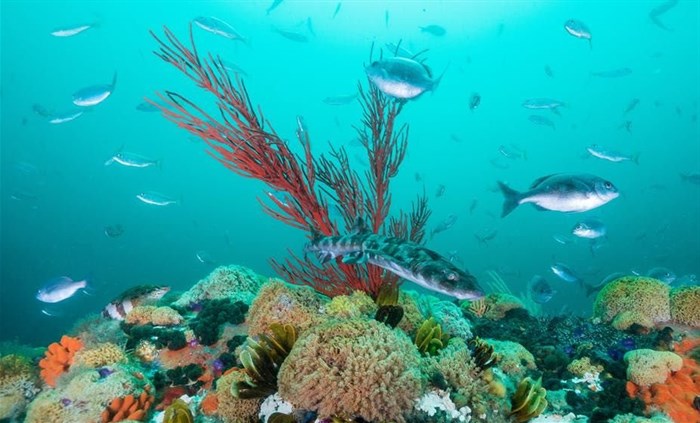
Marine protected areas are geographically distinct regions of the ocean that are given special protection under law. Shutterstock
What is a marine protected area and are these unique to South Africa?
Marine protected areas are geographically distinct regions of the ocean that are given special protection under law. They are used worldwide to address over-exploitation of marine resources and safeguard them for future generations.
In the context of South Africa, marine protected areas are used to protect marine species, habitats and cultural heritage. They’re also designed to restore over-exploited marine stocks, promote research and eco-tourism and protect coastal and offshore habitats. South Africa has 136 coastal and marine habitat types, from the coastal nesting grounds of leatherback and loggerhead turtles of iSimangaliso, to the unique coral and gravel habitats of the Amathole Offshore marine protected area. The addition of the new protected area network means that 90% of these habitat types are now protected.
South African marine experts combined the best available scientific information, strategic thinking and a strong participatory process to create a network of marine protected areas that conserves ecosystems, rather than individual species.
What’s the significance of a site being declared as a marine protected area?
South Africa already had 23 marine protected areas. It’s nearly doubled this by adding a new network of 20 under an initiative to unlock the country’s blue economy known as Operation Phakisa. This means that 5.4% of South Africa’s territorial waters are now conserved, compared to 0.4% before the new network was proclaimed.
It falls short of the 10% goal by 2020 that is promoted by the United Nations’ Sustainable Development Goals. The goal is a global call to action to sustainably manage and protect marine and coastal ecosystems. Despite the country’s short fall, it’s better than the global average of 3.6%.
Furthermore, a global review of 144 scientific studies found that for marine wildlife to be adequately conserved and for people to continue to benefit from the ocean, 30% of the ocean needs to be protected by 2030.
What are the environmental, social and economic affects of doing this?
Marine protected areas should have ecological, social and economic goals. The way these protected areas are identified and managed has improved over the years. In the past, marine protected areas were often declared using only environmental criteria. There was little or no contribution from local communities and other stakeholders. This led to conflict between people who depended on the regions to make a living and those trying to enforce the protected area status. Ultimately, this had a negative impact on the effectiveness of trying to protect areas.
But that’s changing. Now the process of declaring a new marine protected area network involves extensive consultations between various industries. These include fisheries, mining, aquaculture, tourism industries and local communities.
The impact on communities – economically and socially – differs as each marine protected area has its own set of priority objectives. Take Robben Island, located in Table Bay adjacent to the City of Cape Town, which is on the latest list. It has three priority objectives: to protect the breeding and feeding area of endangered seabirds like African penguins, to help rebuild important abalone and west coast rock lobster stocks, and to promote the area for tourism and protect the area’s cultural heritage.
Read more: How" target="_blank">African penguins change their hunting habits when there's less food
What’s supposed to be done now? Are there monitoring and evaluation measures in place? Does South Africa have the capacity to do this properly?
There’s a real danger that the protections won’t be enforced – or become paper parks. This is when marine protected areas only exist on maps and in legislation, but offer little real protection.
To avoid this happening marine protected areas have to be adequately funded, staffed and have community support. In addition, monitoring programmes must be put in place. These must measure whether marine protected areas meet their ecological, economic and social objectives. This needs to be coupled with an effective compliance and enforcement strategy.
Generally speaking, marine conservation and protection are underfunded in South Africa and sustainable funding models haven’t yet been developed. But with the support of other government departments, South African Police Services, industries and NGOs, the country’s managed to implement compliance and long-term monitoring programmes.
An example of an effective, long-term monitoring programme is the multi-disciplinary and multi-institutional project in Algoa Bay that monitors ecosystem change. The project is important because it generates essential knowledge for site management and sustainable development.
But more needs to be done. New innovative technologies such as vessel monitoring systems, remote cameras and drones should be used for better surveillance and effective compliance. In addition, marine protected area management has to take a more human-centred approach and the benefits of protected areas have to be shared more equitably.
The Betty’s Bay marine protected area recently employed local community members to help scientists and managers monitor fish populations. This has led to a greater understanding of the goals of the protected area and improved the relationship between the community and management authority.
This article is republished from The Conversation under a Creative Commons license. Read the original article.























